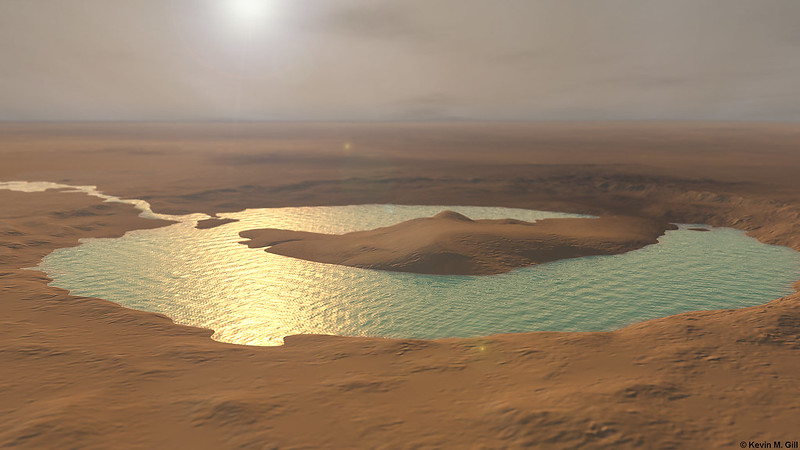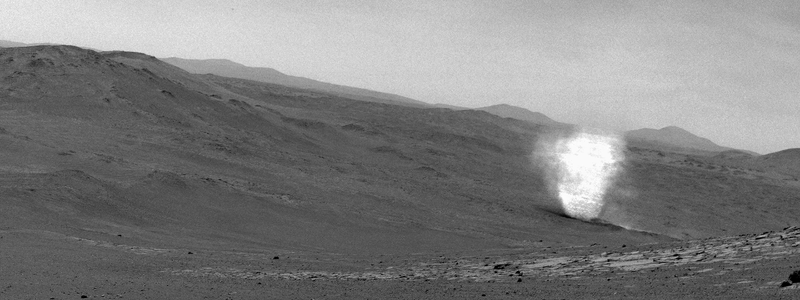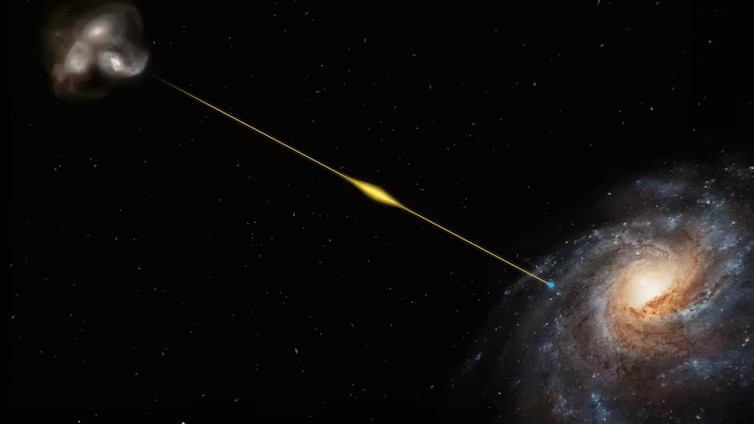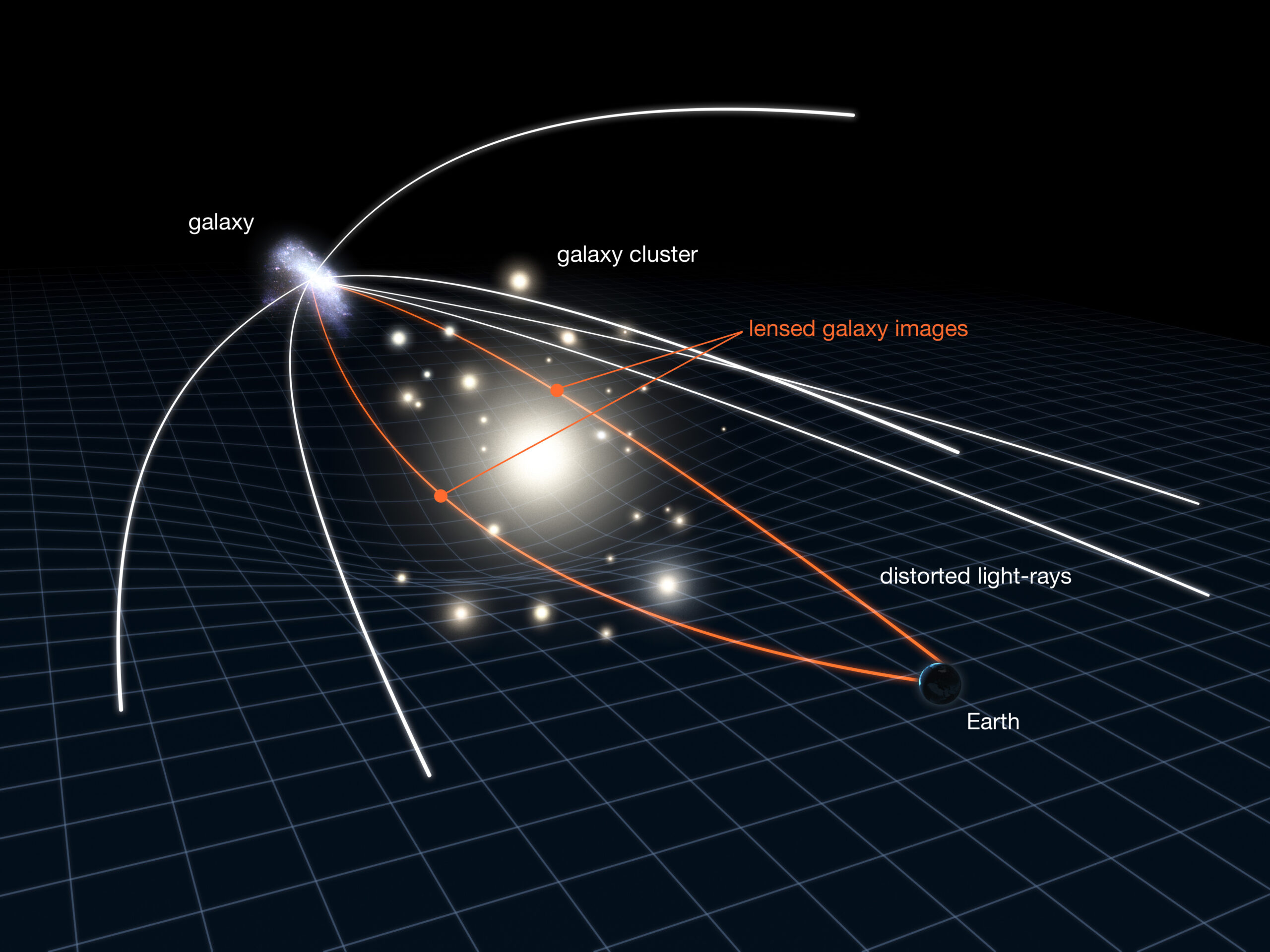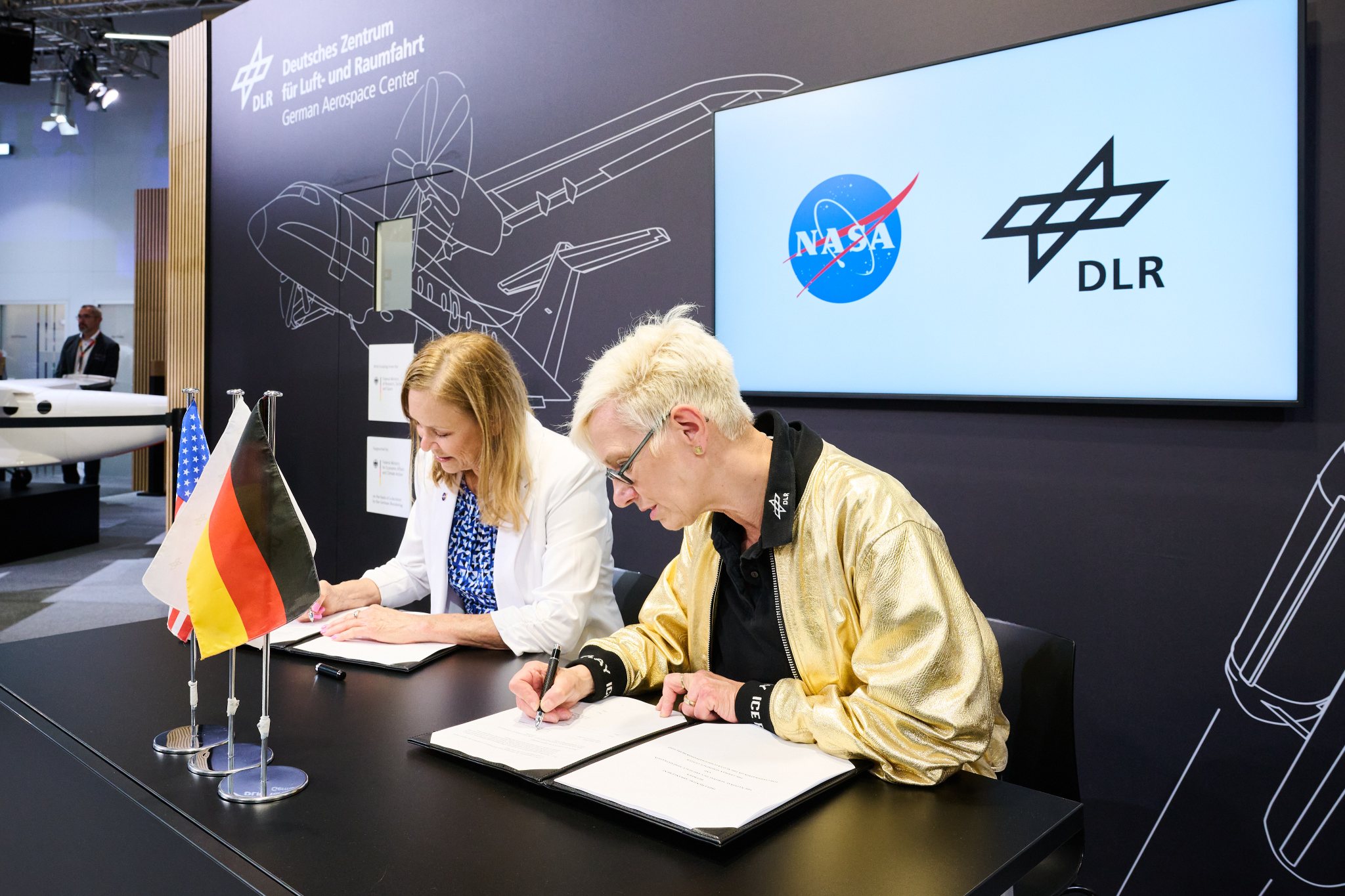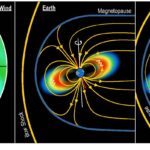Now Reading: First images from Proba-3, the 2-part sun observer
-
01
First images from Proba-3, the 2-part sun observer
First images from Proba-3, the 2-part sun observer


UPDATE, June 17, 2025: The European Space Agency has unveiled the Proba-3 spacecraft’s stunning first images of the sun’s atmosphere. This comes after the two satellites making up Proba-3 flew in perfect alignment 150 meters apart in March, creating an artificial solar eclipse. Maintaining their alignment to a single millimeter for several hours, this artificial eclipse allowed Proba-3 to capture detailed images of the solar corona: the sun’s wispy outer atmosphere. Read on to find out how this amazing mission works.
Proba-3: A sun-observing telescope made from 2 satellites
On December 5, 2024, the European Space Agency launched an audacious two-part telescope into space to study the sun’s atmosphere.
If you’ve ever seen a total solar eclipse, you’ll have caught a glimpse of this wispy outer atmosphere, called the corona. With the moon eclipsing the dazzling body of the sun, this faint light streaming from our star suddenly becomes visible. And coronagraphs – telescopes that study the sun’s atmosphere – work the same way. They block out the sun’s glare with a disk called an occulter attached to the front of the telescope.
But ESA’s new spacecraft, Proba-3, isn’t like any other coronagraph. The occulter isn’t attached to the telescope … but is instead on a separate satellite, 492 feet (150 meters) away. Soaring through space in perfect coordination, the two spacecraft form the largest coronagraph ever made.
EarthSky’s Will Triggs explains the ground-breaking Proba-3 mission in this short video.

Proba-3, reinventing the coronagraph
Scientists have been using coronagraphs to study the sun for almost a century, with French astronomer Bernard Lyot building the first in 1931. Since then we’ve sent several coronagraphs into space, in order to image the sun without the distortion of Earth’s atmosphere. So what’s the need for this unique two-part coronagraph?
Damien Galano, Proba-3’s mission manager, explained:
[Designing a coronagraph] might sound simple, but it’s rendered much harder by the peculiar fact that light acts as both particles and waves. This means some light spills around the edge of whatever’s blocking it, like waves around a seawall. This phenomenon is known as diffraction; it needs to be designed against to minimize unwanted sunlight reaching your instrument.
And the best way to avoid diffraction? Move the occulting disk farther from the telescope. As Andrei Zhukov, Principal Investigator of Proba-3’s main instrument, explained:
This is why total solar eclipses give us such an excellent view of the corona, because the moon is around 238,000 miles (384,000 kilometers) away from Earth, so diffraction effects are minimal.
But a large distance between telescope and the occulter is hard to achieve on a single spacecraft. The LASCO C2 coronagraph on NASA’S SOHO spacecraft – which we often rely on for our daily sun news updates – has its occulter just 70 centimeters (28 inches) away.
It was to overcome this limitation that, two decades ago, scientists at the Laboratoire d’Astrophysique de Marseille came up with Proba-3’s system, in which an entirely separate spacecraft occults the sun from afar.

The fantastic feat of formation flying
To function as a coronagraph, the pair of satellites that make up Proba-3 are performing what ESA is calling the ‘world’s first precision formation flying mission’.
The satellites launched together and then separated into tandem orbits around Earth. These 19.7-hour orbits are highly elliptical, bringing them just 373 miles (600 kilometers) away at perigee – their closest to Earth – and 37,612 miles (60,530 kilometers) away at apogee, their farthest from Earth.
And during apogee, when Earth’s gravitational pull is weaker and requires less fuel, the satellites maneuver into formation. They line up 492 feet (150 meters) apart, so that the outer spacecraft’s 4.6 feet (1.4 meter) occulting disk creates an artificial solar eclipse for the inner satellite.
To keep the eclipse stable, they maintain their separation to a single millimeter. The spacecraft do this autonomously, communicating with each other via LEDs and lasers. A shadow detector on the telescope satellite makes corrections if the occulting satellite’s 3 inch (8 centimeters) shadow is in any way misaligned. And they maintain this precise positioning for six hours at a time.

Proba-3 is providing a unique view of the sun
The increased distance between Proba-3’s telescope and its occulter allow it to see much closer to the edge of our star without bright sunlight bleeding into the image. Proba-3 is able to see the corona from just 1.1 times the radius of the solar disk. For contrast, LASCO C2’s field of view starts at 1.5 times the solar radius.
So scientists using Proba-3 are able to see the sun’s inner corona, which is normally visible only during a total solar eclipse. Total solar eclipses only occur an average of once every 18 months, and typically last under seven minutes. But Proba-3 is able to study the inner corona for six hours at a time around 50 times a year.
And it’s studying this region with a better frame rate (number of frames per second) than other space-based coronagraphs. While LASCO C2 takes an image roughly every 12 minutes, Proba-3 can image the corona up to every 30 seconds.
Scientists hope this detailed view of the inner corona will provide insight into the development of coronal mass ejections (CMEs): blobs of solar material and magnetic fields blasted out during events on the sun. CMEs can cause auroras if they reach Earth, as they disturb our magnetic field. And particularly strong CMEs can pose a threat to satellites and even power grids on Earth.

A new look at the corona
The Proba-3 team currently plans to have two six-hour observing periods every week, depending on how much fuel needs to be saved across the planned two years of operation.
Proba-3 is an ambitious innovation, which ESA describes as a “technology demonstration mission”. And it should be a useful tool in scientists’ growing sun-observing arsenal. Prior to the launch, mission scientist Joe Zender said:
Success will rely on the formation flying technology working as planned, of course, but the closer we get to launch, the more I realize the excitement of what we are doing, including co-observations with many other solar observing missions.
Bottom line: ESA has unveiled the first images from Proba-3, an ambitious mission observing the sun’s outer atmosphere. Proba-3 is comprised of 2 satellites that align to form an artificial solar eclipse.
Read more: Why is the sun’s atmosphere hotter than its surface?
The post First images from Proba-3, the 2-part sun observer first appeared on EarthSky.
Stay Informed With the Latest & Most Important News
-
 012024 in Review: Highlights from NASA in Silicon Valley
012024 in Review: Highlights from NASA in Silicon Valley -
 02Panasonic Leica Summilux DG 15mm f/1.7 ASPH review
02Panasonic Leica Summilux DG 15mm f/1.7 ASPH review -
 03How New NASA, India Earth Satellite NISAR Will See Earth
03How New NASA, India Earth Satellite NISAR Will See Earth -
 04From Polymerization-Enabled Folding and Assembly to Chemical Evolution: Key Processes for Emergence of Functional Polymers in the Origin of Life
04From Polymerization-Enabled Folding and Assembly to Chemical Evolution: Key Processes for Emergence of Functional Polymers in the Origin of Life -
 05And Thus Begins A New Year For Life On Earth
05And Thus Begins A New Year For Life On Earth -
 06Astronomy Activation Ambassadors: A New Era
06Astronomy Activation Ambassadors: A New Era -
07SpaceX launch surge helps set new global launch record in 2024












